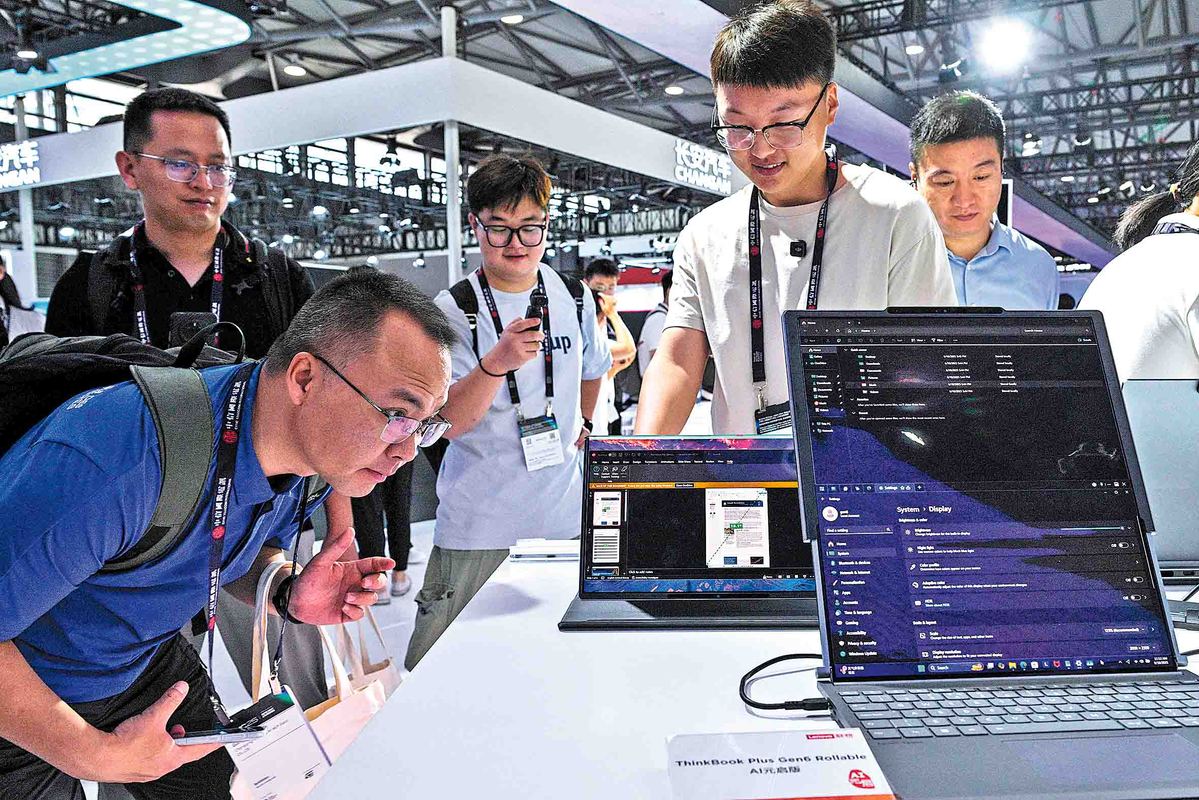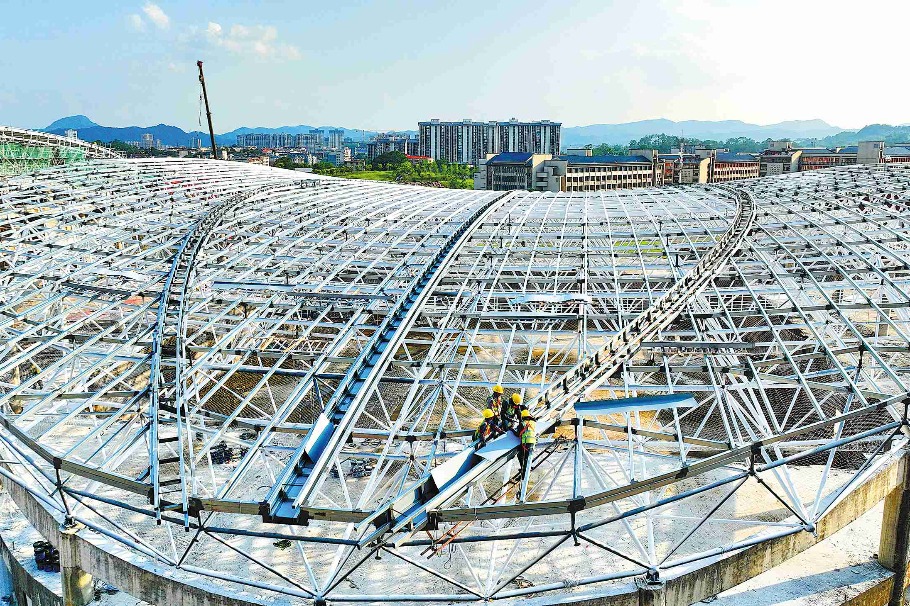Nation leading in 5G connections, application
Telecom carriers, manufacturers ramp up use for edge in next phase


Chinese companies are accelerating the adoption of 5G-advanced — which plays a key role in bridging from 5G to 6G with new features — and artificial intelligence technologies to power cutting-edge applications, from humanoid robots to smart connected vehicles, as the nation solidifies its leadership in next-generation digital infrastructure.
The move also comes as global 5G connections surpassed 2 billion by the end of 2024, with China accounting for over half at 1 billion — the world's first market to hit this milestone, said the GSMA, an industry group representing the world's largest mobile phone operators.
By 2030, 5G is projected to comprise 57 percent of total mobile connections globally, with China's robust network laying the foundation for industrial digitization, the GSMA said.
Yang Jie, chairman of China Mobile, the world's largest telecom carrier, highlighted the dawn of the "AI plus era", in which AI outperforms humans in tasks like image recognition and complex reasoning.
"Silicon-based lifeforms, such as AI terminals, connected vehicles and robots, will soon outnumber humans," Yang said at the Mobile World Congress Shanghai conference, which opened on Wednesday.
To harness this shift, Yang outlined a carbon-silicon fusion strategy, including accelerating AI's evolution to handle sophisticated tasks, building next-generation networks to bridge silicon and carbon-based systems, and driving collaborative innovation to redefine lifestyles, production and governance.
"AI presents unprecedented opportunities. China Mobile aims to be a provider, aggregator and operator in this new era," he added.
According to the latest data from the Ministry of Industry and Information Technology, China's 5G infrastructure has made significant progress. 5G stations now account for 33 percent of all mobile base stations in the country.
Xu Zhijun, rotating chairman of Huawei, said the telecom market has entered a mature phase, yet change is omnipresent. By identifying shifts and capturing growth-driven demand, the industry can fuel further expansion.
Xu said more efforts can be made to boost the supply and consumption of high-definition videos through coordinated efforts across the entire ecosystem, and to bring 5G to every car for new growth in intelligent connected vehicles.
According to a forecast by the China Industry Innovation Alliance for the Intelligent and Connected Vehicles, 5G-connected vehicles will account for 30 percent of all cars sold in China in 2025, with penetration expected to rise steadily to 95 percent between 2026 and 2030.
Xu said autonomous vehicles must be capable of independent perception and decision-making during self-driving operations. While both the vehicle cabin and the car itself require network connectivity, their needs differ, as do their business models. Therefore, these systems should operate independently, each maintaining its own connection.
"The industry must seize this growth opportunity in intelligent connected vehicles," Xu added.
Qiu Heng, chief marketing officer at AgiBot, a Shanghai-based AI and robotics startup, said the company's robots can serve as guides for telecom companies, supporting multi-round voice conversations in both Chinese and English with real-time listening and speaking capabilities. Powered by a specialized large language model, they can deliver accurate explanations and marketing dialogues, ensuring precise and efficient information delivery.
Meanwhile, the robots excel in moving about in complex environments, with autonomous path planning, navigation and obstacle avoidance. They can accurately identify facility alerts such as alarm lights and obstacles such as temperature and humidity sensors, significantly improving operational efficiency and safety while reducing labor costs and risks, Qiu said.
Currently, the company's robots have been deployed in large-scale interactive service scenarios, including telecom carriers' service halls, corporate showrooms, financial companies' exhibition spaces and automotive display booths, he added.




































